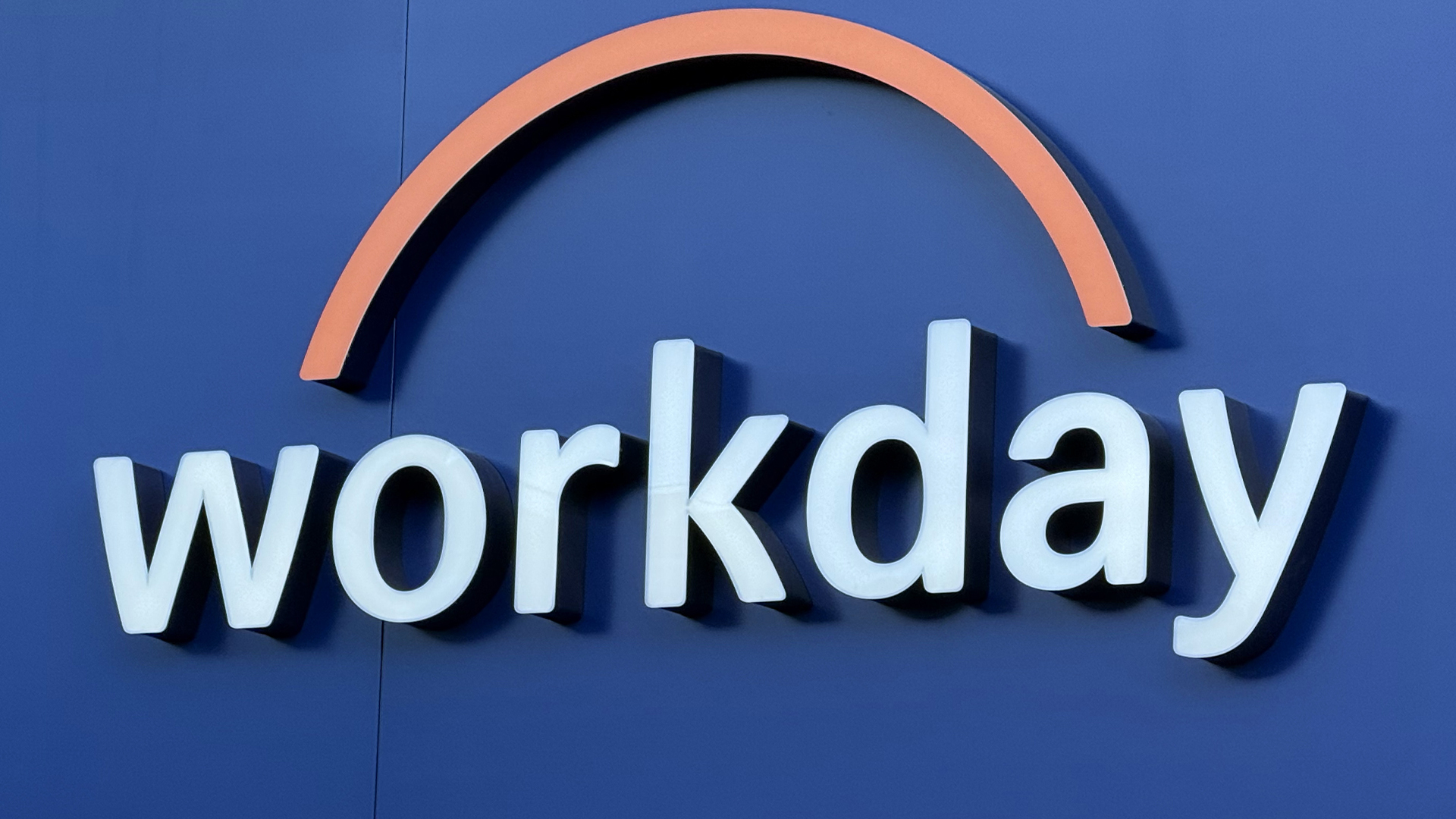IT Pro Panel: What’s stopping diversity in tech?
The need for more diversity is well established - but we still have a way to go


At this point, arguing for more diversity in tech is (or at least should be) like preaching to the converted. Multiple studies have shown the benefits of diverse technical teams, it remains an ever-present topic of conversation within the industry, and awareness of the need to increase diversity has never been higher.
Yet, even with all this attention, diversity across a variety of categories still remains a perennial problem, indicating greater awareness may not be having enough of an impact. So if we know there’s a problem, what’s stopping organisations from remedying it? We spoke to some of our expert panellists about why diversity in tech continues to be such a challenging issue to address, and what can be done to try and fix it.
It’s important to note the last few years have not been entirely without progress. Pressure from both campaign groups and industry bodies has led more companies to implement programmes aimed at boosting diversity and creating more inclusive working environments. As Studio Graphene founder and CEO Ritam Gandhi notes, however, these efforts aren’t yet universally adopted.
“I think the ones that are taking it seriously are either large organisations with top-down direction requiring managers to take it seriously, or smaller businesses and startups that have witnessed the benefits of a diverse team,” he says. “There are a number of smaller businesses in particular who don't prioritise diversity because it simply isn't a high enough priority – as they are battling for survival or growth, and that needs to come at any cost for them.
“I definitely think one of the big changes is the extent to which addressing the lack of diversity is being taken seriously by organisations and policymakers. For instance, I was impressed to see Web Summit giving a 90% discount on tickets for women in tech. One of the big realisations that everyone is coming to is that a ‘heterogeneous’ team can create better technology delivery outcomes to the table because everyone brings a different perspective to the table.”
The pace of change is slow, though, and the problem extends beyond entry-level development and helpdesk roles. According to our panellists, more effort is still needed to decrease gender and racial disparities at the higher levels of organisations.
Pipeline problems
“We are starting to see reports that show growth when it comes to things like the gender split in technology roles in the UK, but we're not seeing that same level of growth for more senior technology roles,” says Moonpig head of security Tash Norris. “This is even more true when you look at BAME representation at director-level and above in the technology sector.
Sign up today and you will receive a free copy of our Future Focus 2025 report - the leading guidance on AI, cybersecurity and other IT challenges as per 700+ senior executives
“However, whilst the growth when it comes to greater diversity in tech isn't where it should be, I do think we're starting to see companies make more concrete commitments on their diversity and inclusion agendas. Diversity is so much more than gender and it's refreshing to start to see companies be more upfront about how they're creating more inclusive environments and contributing towards creating good 'pipelines' of talent, as well as nurturing existing talent.”
The question of how to shore up tech’s talent pipelines – the supply of candidates coming into roles for the first time – has been the subject of debate for some time. It’s widely regarded, though, as a critical step for long-term diversity improvements, particularly as it relates to women in technical roles.
“I agree with Tash about the need for diversity in senior roles, but that won't happen unless we are feeding the pipeline,” explains Natural History Museum CIO Alison Davis. “In my experience, when I’ve hired at senior roles, the candidates just aren't there, and this isn't just about how you write the job description.”
Davis’ experience is not unique; even when organisations actively want to bring a greater balance to their senior technical roles, they’re often stymied by a lack of available candidates. This is one of the principal reasons why improving the supply of diverse technical candidates has become such a priority.
“I think the biggest pipeline challenges lie in the deeper tech roles such as security and infrastructure,” adds Manila McLean, CIO of Newcastle Building Society. “I've witnessed over the past few years a move towards a better balance in software development, testing and IT services. In other digital and tech roles such as product design and UX, I'd say we have a really good balance across industry; certainly in the financial services sector organisations I’ve worked with.”
Looking at gender diversity in particular, one of the industry’s biggest goals has been to get more female students into STEM fields at an earlier age, and turning an interest in technical subjects into a fully-fledged career after university. The IT community, according to Davis, could help this effort by doing a better job of communicating that the industry includes a range of roles, from highly technical careers to ones that are much more people-focused, adding “it’s not all about coding!”.
“Alison referenced the importance of encouraging young women to choose STEM subjects,” Norris says, “and I agree this is absolutely part of the resolution to increasing our talent pipeline. At Moonpig we've recently partnered with two organisations, Stemettes and Cajigo to do exactly this. Investing time demystifying our sector and showing that it's a fulfilling (and interesting) career path can go a long way.”
“I agree,” McLean adds; “it starts with grass roots!”
Culture club
One of the key tasks for any company looking to create a diverse environment is to ensure that it’s a welcoming place for different kinds of people. This, however, can be fundamentally undermined by the culture of an organisation, Davis points out, and it’s about more than stamping out overt discrimination or bullying.
“Company culture has to affect diversity,” she explains. “It doesn't matter what you say, if there is an ethos that a company works in a certain way and that is counter to supporting inclusion, then you can have all the policies you like; it won't change. It doesn't have to be overt, but if for example, you’re expecting folks to travel all the time, that excludes people.”
“I do think institutional biases still play a role in promotion challenges,” Gandhi adds, “but perhaps less so ‘institutionally and more down to individual personalities. As individuals, we have personal experience in relation to who we've worked with and how things have worked out – this is controversial, but I do see individuals letting past experiences impact their present world decisions.”
A problematic company culture can manifest in other ways too, such as favouring more aggressive, confrontational management styles that are typically seen as masculine. Placing more emphasis on these kinds of styles can create an environment in which more empathetic personalities are viewed as less effective.
“I think that assertiveness is sometimes a mischaracterisation of being decisive,” says Norris. “Having the ability to be clear on, and committed to, a decision (whilst still being open to fair challenge and even maybe being wrong) is a great skill for a leader. Sometimes, being decisive is also demonstrated alongside assertiveness or even aggression and I believe it's misunderstandings around the skill that's actually being appreciated that can cause challenges around diverse hiring, progression and maintaining diverse talent.”
“Not that long ago, I was told by a fellow CIO with whom I was working on a project that he didn't really trust me to be capable,” Davis reveals, “because he hadn't seen me throwing my weight around, and he thought you had to do that to be a CIO – never mind that I'd been a successful one for a significant number of years.”
McLean suggests one of the reasons why technical roles in areas like UX and product design have a better gender balance than deeper tech areas, like infrastructure or security, may be because these areas tend to use less ‘masculine’ terminology. She also argues in order to improve overall diversity, companies might need to adopt a more interventionist approach.
“I‘ve been reflecting on things like gender quotas and a programmatic approach to achieving proof points in diversity and inclusion, and while I would prefer the culture to drive behaviours and outcomes, I do think in order to see a shift we need that ‘programme and quota’ element until it almost becomes a moot point. I’ve seen initiatives like the Women in Finance Charter, which requires organisations to commit to achieving a better gender balance across financial services, having successes in those organisations that have committed to it.”
Movers and shakers
This approach has gained favour in some circles, but it can be controversial. Some argue this kind of affirmative action can actually be damaging for equality, as it potentially implies someone may have got a job on the basis of box-ticking diversity initiatives, rather than their skills. Others, however, maintain this outcome can be avoided by employing quotas in a thoughtful and considered manner, which is what Norris’ boss – Moonpig CTO and fellow IT Pro Panellist Peter Donlon – has done.
“I initially struggled with quotas,” she admits. “I'd personally hate to think the main reason I got a role (or for anyone at the company to think that) is because I'm female. However, it can drive good behaviours; our CTO has previously said he won't 'click go' on hiring a role until he's seen a diverse candidate pool. This approach has really resounded with me. It's really ensured a lot of us to think about whether we're doing enough to attract (and seek out) diverse talent.”
A good HR team can really make a difference in this aspect. By emphasising the importance of building a diverse talent pool, IT leaders can work together with talent acquisition teams to ensure that a wide enough net is being cast in order to seek out a broad and diverse selection of candidates, while still hiring somebody suited to the job.
“I feel lucky to work with a really talented recruitment team who know how important it is to our team, and our CTO, to see a diverse candidate pool,” Norris says, “which means more than just gender diversity.”
“When I open a new role, our recruitment team will do things like challenge my job description, which I really dig – such as what skills are truly must-have, whether a degree is really needed, et cetera. We do need to ensure that whilst our recruitment teams have tough KPIs around hiring, that we're also making space (and creating a culture) where they feel okay to challenge what we're asking for and how we're asking for it.”
This is also a key part of the conversation McLean’s team has with HR departments and recruitment agencies when filling technical roles, noting that looking for candidates outside of traditional pipelines is one short-term measure she’s considering to boost diversity. McLean’s considering ways to attract candidates who are hoping to reskill and transition into a technical role, “almost like apprenticeships for mid-career candidates”.
“Yes, we have had a lot of success with internal hires,” agrees Davis. “One of our recent developers has moved over from our fundraising team, where she was doing some local data analysis to support operations. Project managers are easy to move around and can then move into technical areas if they want, and we have also had folks move into the service desk.”
“We have real challenges with recruitment because of the comparatively low salaries, which is why internal development is a good route for us. We're also looking at being more creative with apprenticeships, which we hope will open up roles to wider communities.”
Norris has firmly embraced internal recruitment and cross-skilling, but beyond its capacity for improving diversity, she pointed out that bringing in staff from different areas of the business (or different industries altogether) can introduce significant advantages from a problem-solving perspective.
“I'm a big fan of career-switchers! I have an ex-lawyer in my team and an ex-marketing executive joining soon. They have entirely different skill sets and perspectives to the rest of the team and continue to increase our effectiveness as a unit. Their strength areas are ones not often found in traditional cyber security applicants and so they've been able to join and upskill some team members whilst also learning the tech side themselves. I think there's still some way to go for companies to recognise and embrace the value added by mid-level career switchers (and not offer them entry-level salaries).”
Fostering true diversity is a challenge, and despite the industry’s stated willingness to improve matters, factors such as a lack of diverse applicants for technical positions and a need for cultural change have proved to be barriers to companies’ diversity and inclusion efforts.
There are ways to remedy this, however. Improving the pipeline by making technical roles more attractive to people from diverse groups is one strategy, as is mandating diverse candidate pools at the hiring stages and removing unnecessary qualification requirements. Whatever the approach, one thing is certain: the road to a genuinely diverse tech workforce is still very long indeed.
Adam Shepherd has been a technology journalist since 2015, covering everything from cloud storage and security, to smartphones and servers. Over the course of his career, he’s seen the spread of 5G, the growing ubiquity of wireless devices, and the start of the connected revolution. He’s also been to more trade shows and technology conferences than he cares to count.
Adam is an avid follower of the latest hardware innovations, and he is never happier than when tinkering with complex network configurations, or exploring a new Linux distro. He was also previously a co-host on the ITPro Podcast, where he was often found ranting about his love of strange gadgets, his disdain for Windows Mobile, and everything in between.
You can find Adam tweeting about enterprise technology (or more often bad jokes) @AdamShepherUK.
-
 What businesses need to know about data sovereignty
What businesses need to know about data sovereigntyWithout a firm strategy for data sovereignty, businesses put their data and reputations at risk
-
 Anthropic says MCP will stay 'open, neutral, and community-driven' after donating project to Linux Foundation
Anthropic says MCP will stay 'open, neutral, and community-driven' after donating project to Linux FoundationNews The AAIF aims to standardize agentic AI development and create an open ecosystem for developers
-
 Is diversity still a challenge in the channel?
Is diversity still a challenge in the channel?Industry Insights Despite progress, diversity remains a challenge in the tech channel, as women represent less than a quarter of the UK’s tech workforce and still face structural and cultural barriers
-
 Enterprises are cutting back on entry-level roles for AI – and it's going to create a nightmarish future skills shortage
Enterprises are cutting back on entry-level roles for AI – and it's going to create a nightmarish future skills shortageNews AI is eating into graduate jobs, and that brings problems for the internal talent pipeline
-
 AI resume screening, recruiter chatbots, and ‘ghost jobs’ are causing havoc for struggling entry-level workers
AI resume screening, recruiter chatbots, and ‘ghost jobs’ are causing havoc for struggling entry-level workersNews A new report shows employers are cutting back on entry-level hiring, but expect things to improve eventually
-
 Workday snaps up AI-powered conversation recruitment platform, Paradox
Workday snaps up AI-powered conversation recruitment platform, ParadoxNews Workday will integrate Paradox’s AI-driven candidate experience agent to help deliver talent faster
-
 The Channel Recruiter and Nebula debut new global talent resourcing solution
The Channel Recruiter and Nebula debut new global talent resourcing solutionNews Tech Talent on Tap aims to provide channel firms with on-demand access to elite technical professionals from around the world
-
 Young women are keen on pursuing STEM careers, but they’re still facing huge barriers
Young women are keen on pursuing STEM careers, but they’re still facing huge barriersNews From fears that STEM courses will be too demanding to concerns about family responsibilities, women aren't taking up training they'd actually like to do
-
 Women in tech are plagued by imposter syndrome – here are three tips to overcome lingering doubts
Women in tech are plagued by imposter syndrome – here are three tips to overcome lingering doubtsNews Imposter syndrome among female tech workers gets worse as careers progress
-
 ‘Employees aren’t having it’: European workers are pushing back on the US-style ‘always on’ work culture – many are worried about the rise of ‘hustle culture’ and a third would quit if forced back to the office
‘Employees aren’t having it’: European workers are pushing back on the US-style ‘always on’ work culture – many are worried about the rise of ‘hustle culture’ and a third would quit if forced back to the officeNews New research shows European workers are pushing back on the 'always on' culture and fear US-style corporate policies creeping into workplaces.
